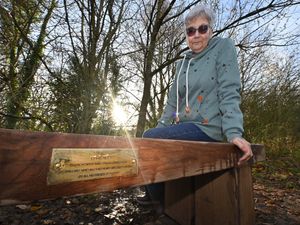Shropshire Council apologises for handling of resident's complaint about 'unacceptable noise' from nearby business
Shropshire Council has apologised for how it handled a planning complaint.
A resident, referred to as Mr X, went to the Local Government & Social Care Ombudsman (LGO) after he alleged the council failed to properly investigate his reports of a breach of a planning condition near his home, and refused to consider his complaint.
He said that the failure to comply with the condition caused “unacceptable noise” that badly affected his enjoyment of his home, and wanted the council to take action.
The issue arose after Mr X alleged a business was not complying with a condition attached to planning permission that aimed to protect nearby residents from noise.
Shropshire Council opened a planning enforcement case and wrote to Mr X, explaining the investigation “could take several months.” However, he was informed that he would be contacted “once appropriate action had been identified” and provided contact details should he need more information.
The council’s records showed Mr X reported the noise on five days over the following five weeks. However, the business in question disputed the alleged breach, although admitted that other activities on the site caused noise.
During the following eight months, the council made two visits but found no evidence of noise from the site.
However, Mr X said noise always restarted, and the council “needed to deal with the matter”.
He made three further noise reports over the following four months. The council again contacted the business, who said there had been no change to activities on the site. The council made another visit but heard no noise. It wrote to Mr X and said it would continue to monitor the site.
Six months later, Mr X contacted the council saying the noise had increased over the last month and it was noisy that day. Shropshire Council acknowledged the contact, and about two months later, made a further visit.
Again, Mr X reported noise on two separate days over two weeks. The council said it was continuing to investigate and would try and watch the site more closely. It apologised for the delay in deciding the matter but said gathering the evidence was difficult.
Over the following four months, Mr X again reported noise. However, having visited the site again, the council said it found no evidence of a breach so would be closing the case.
Mr X said the council’s decision was “unacceptable” and had not dealt with his email. The council later visited the site to consider what the email said about equipment. However, it found that it was being serviced to keep it in good working order, and the condition in question did not cover all buildings, equipment and activities carried out on the site.
Mr X complained to the council saying he could see the equipment from the road, and had failed to act despite the business “breaking planning rules.”
However, Shropshire Council refused to consider it under its complaints procedure, saying too much time had passed.
Mr X therefore went to the LGO, saying the council had not properly investigated his report was was wrong to say his complaint “was out of time” when it had taken years to investigate the breach.
Shropshire Council told the LGO that Mr X’s reports were of sporadic noise, which usually took longer to investigate, and the condition was enforceable. However, it recognised that his complaint was made shortly after its planning enforcement decision, so should not have considered it “out of time”.
The LGO found no fault in causing injustice in the council’s planning enforcement decision making. However, it said there was fault in its complaints handling, and accepted that the proposed apology was a “proportionate, appropriate and reasonable remedy for the injustice the fault caused Mr X.”
Shropshire Council agreed to send Mr X a written apology for the distress caused by its failure to put his complaint through its appropriate procedures and to provide the LGO with evidence of its compliance.




